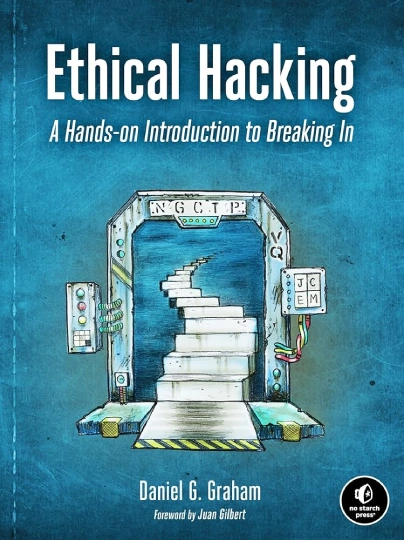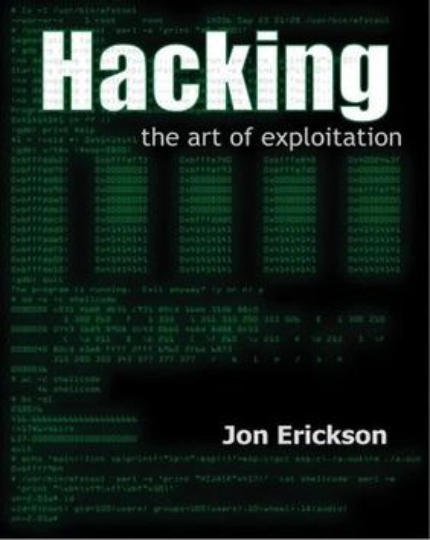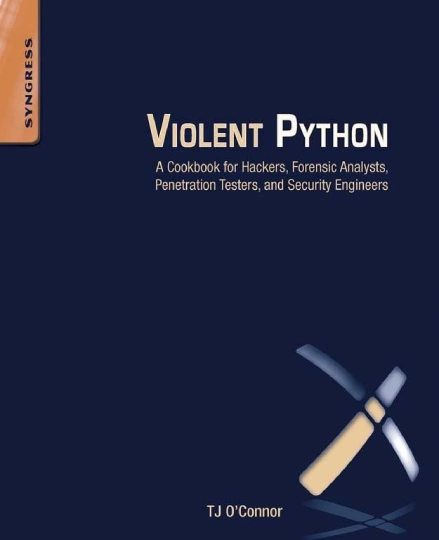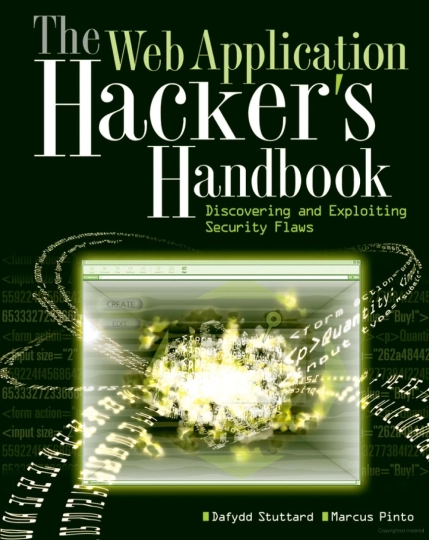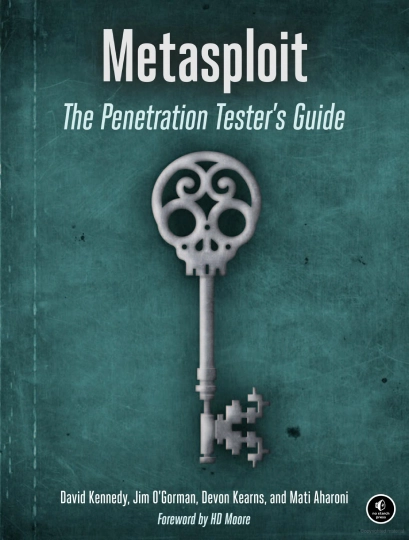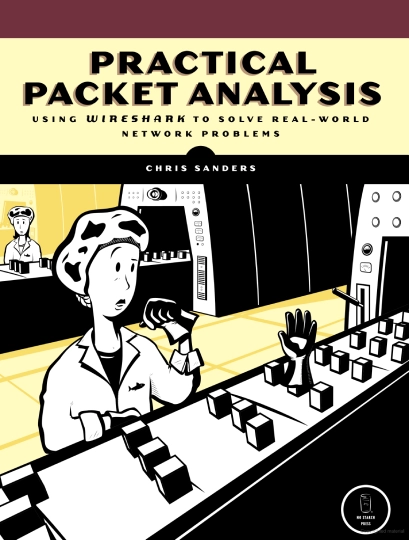Ethical hacking isn’t just a skill, it’s a mindset. As threats get more sophisticated, the tools and knowledge required to defend systems must advance just as fast. Whether you’re starting or refining your approach, the right ethical hacking books can help you think like a hacker and act like a professional.
Pairing these books with a Certified Ethical Hacking Course can accelerate your learning, offering both theoretical depth and hands-on experience.
Here’s a carefully curated list of 10 essential reads that offer real-world insight, hands-on tactics, and foundational theory to guide your ethical hacking journey.
1. Ethical Hacking: A Hands-On Introduction to Breaking In
by Daniel G. Graham
This book offers a practical, lab-driven approach to ethical hacking, ideal for building foundational skills.
- It introduces core concepts like Linux navigation, networking fundamentals, and the architecture of secure systems.
- You’ll learn how to scan for vulnerabilities, perform reconnaissance, and craft simple exploits in a controlled environment.
- What sets it apart is its structured, step-by-step format, each chapter builds on the last, guiding you from basic scripting to advanced penetration testing.
- If you’re looking to apply what you read directly into virtual labs or CTF platforms, this book aligns perfectly with that hands-on learning mindset.
2. Hacking: The Art of Exploitation
by Jon Erickson
This book dives deep into the theory behind hacking, blending computer science principles with real-world hacking techniques.
- It covers essential topics like memory management, buffer overflows, and the low-level workings of computer systems, key areas that many ethical hackers often overlook.
- What makes this book stand out is its focus on understanding the “how” behind vulnerabilities and exploits, not just how to use tools or run scripts.
- You’ll explore the C programming language and learn to identify security flaws directly from the source code, allowing you to exploit vulnerabilities from a more fundamental perspective.
- It’s a great choice for those who want to dive into the technical details and understand the inner workings of attacks, instead of just applying pre-packaged solutions.
3. Black Hat Python: Python Programming for Hackers and Pentesters
by Justin Seitz
This book is ideal for those looking to take their hacking and cybersecurity skills to the next level by learning how to develop their offensive security tools using Python.
- It focuses on the practical application of Python for penetration testing, teaching how to automate attacks and develop custom tools for exploitation and vulnerability scanning.
- You’ll learn to create network sniffers to intercept data, write custom trojans for backdoor access, and build a wide range of useful security tools that can be integrated into your penetration testing workflow.
- The book walks through several real-world hacking techniques, helping readers understand how to turn Python code into a powerful weapon in their cybersecurity arsenal.
- What makes this book particularly valuable is that it blends programming knowledge with practical hacking techniques, enabling readers to not just perform attacks but also understand how to build and customize their attack tools.
4. The Hacker Playbook 3: Practical Guide To Penetration Testing
by Peter Kim
This book provides a realistic, hands-on approach to penetration testing by mimicking the strategies and tactics of real-world attackers, making it one of the most practical guides for aspiring ethical hackers.
- It focuses on critical stages of a penetration test, including red teaming (simulating real-world attacks), post-exploitation (how to maintain access and gather valuable data after an initial breach), and reconnaissance (gathering intelligence before launching an attack).
- The book’s third edition is updated with the latest techniques and tools used by attackers in the current threat landscape, ensuring that readers are equipped with modern, relevant skills.
- You’ll learn advanced techniques for bypassing security defenses, such as evading antivirus software, exploiting web application vulnerabilities, and leveraging privilege escalation.
- The step-by-step methodology presented in the book helps readers develop their attack strategies and practical penetration testing skills through real-life scenarios and exercises.
5. CEH v11 Certified Ethical Hacker Study Guide
by Ric Messier
This study guide is specifically designed to help readers prepare for the EC-Council’s Certified Ethical Hacker (CEH) exam, providing a comprehensive and structured approach to mastering the key concepts of ethical hacking. The content is organized to align directly with the CEH v11 certification objectives, covering topics such as network security, encryption, web application security, cloud computing, and penetration testing.
- It offers a systematic learning approach, with each chapter breaking down complex topics into digestible sections, making it easier to understand and retain critical information.
- The book includes a variety of review questions and practical labs, allowing readers to test their knowledge and apply what they’ve learned in real-world scenarios.
- Real-world case studies and examples help readers understand how ethical hacking techniques are applied in professional environments, enhancing both the learning experience and exam preparation.
- This guide is perfect for those who want to not only pass the CEH exam but also develop the foundational knowledge and practical skills necessary for a successful career in cybersecurity.
6. Practical Malware Analysis
by Michael Sikorski and Andrew Honig
This book is a definitive guide for anyone looking to dive deep into the world of malware analysis and reverse engineering, focusing on the techniques and tools used to dissect and understand malicious software. It covers both static and dynamic analysis methods, providing readers with the knowledge to examine malware without running it (static) and while it’s active in a controlled environment (dynamic).
- The book introduces various tools and techniques used by professionals to analyze malware behavior, including debuggers, disassemblers, and virtual machines, offering a comprehensive overview of how to identify malware functionality and threats.
- One of its strengths is the in-depth exploration of real-world case studies, allowing readers to see the application of analysis methods on live malware samples. This hands-on approach provides practical experience with the tools and techniques needed to break down complex pieces of malware.
- If you’re interested in reverse engineering, this book offers a structured pathway to mastering the craft, from the fundamentals of disassembling code to advanced analysis of advanced malware strains.
- The book also includes various exercises and labs to help readers apply the knowledge in real-world settings, enhancing both theoretical and practical understanding of malware analysis.
7. Violent Python: A Cookbook for Hackers, Forensic Analysts, Penetration Testers, and Security Engineers
by TJ O’Connor
This book is a practical and tactical guide for using Python in the field of cybersecurity, focusing on how to develop automation scripts that are effective in various security-related tasks. It provides clear, no-frills examples of Python code, making it easy for readers to understand and implement the solutions directly into their work, whether it’s penetration testing, forensic analysis, or network security. The book covers a broad range of cybersecurity applications, including:
-
- Password Cracking: Learn how to automate brute force and dictionary attacks to test the strength of password systems.
- Network Scanning: Write scripts for discovering open ports, mapping networks, and identifying vulnerabilities in network infrastructure.
- Packet Sniffing: Create tools to capture and analyze network traffic, helping you understand and detect malicious activity.
It also teaches readers how to integrate Python with popular tools used in the cybersecurity industry, such as Metasploit, Scapy, and others. Whether you’re new to Python or have some programming experience, the book’s structured approach to coding offers a practical way to enhance your ethical hacking toolkit, automate repetitive tasks, and perform advanced security operations efficiently.
The easy-to-follow recipes and examples in this book make it an excellent resource for penetration testers, security engineers, and anyone interested in learning how to use Python to solve real-world cybersecurity problems.
8. The Web Application Hacker’s Handbook
by Dafydd Stuttard and Marcus Pinto
This comprehensive guide focuses exclusively on web application security, making it a must-read for anyone involved in securing web-based systems or conducting web penetration testing. The book covers a wide array of web application vulnerabilities, including:
-
- SQL Injection (SQLi): Learn how attackers exploit poor input validation to access and manipulate databases.
- Cross-Site Scripting (XSS): Dive into how malicious scripts can be injected into web pages and how to identify and prevent such attacks.
- Cross-Site Request Forgery (CSRF): Understand how attackers can trick users into executing unwanted actions, and how to defend against it.
- Session Hijacking: Explore how attackers steal or manipulate user sessions to impersonate legitimate users and gain unauthorized access.
The book provides detailed, step-by-step instructions for exploiting these vulnerabilities, followed by mitigation strategies to help web developers protect their applications. It also covers the tools and techniques used by ethical hackers, including manual testing methods and automated vulnerability scanners, to identify and exploit vulnerabilities in real-world applications.
- In-depth Case Studies and Examples: Throughout the book, real-world case studies and examples are provided, showing how actual vulnerabilities have been exploited, giving readers practical insight into the hacking techniques used by attackers.
- Defensive Measures: The authors don’t just focus on exploitation; they also provide actionable strategies for securing web applications against common threats.
Whether you’re a developer looking to strengthen your web applications or a penetration tester working to uncover security flaws, this book equips you with the knowledge and tools needed to understand, exploit, and defend against web application vulnerabilities.
9. Metasploit: The Penetration Tester’s Guide
by David Kennedy, Jim O’Gorman, Devon Kearns, and Mati Aharoni
This book offers a comprehensive guide to using the Metasploit Framework, one of the most powerful tools for penetration testing and ethical hacking. It’s ideal for anyone looking to master Metasploit for real-world exploitation and vulnerability testing.
-
In-depth Metasploit Framework Overview
The authors cover everything from installation to advanced exploitation techniques. You’ll gain a thorough understanding of how to use Metasploit to test and secure systems.
-
Exploitation Techniques
Learn how to effectively exploit vulnerabilities across a wide range of platforms and services. The book guides you through using Metasploit to exploit systems, break into networks, and test security measures.
-
Walkthrough of Exploits
Detailed examples of using different exploits, from remote code execution (RCE) to more targeted attacks.
-
Hands-On Exercises
Real-world exercises let you develop your own exploits and run them in a controlled environment, allowing for practical application of the techniques.
-
-
Post-Exploitation
The book doesn’t stop after exploitation. It walks you through the post-exploitation phase, showing how to maintain access, escalate privileges, and pivot within a network to expand your reach.
-
Evasion Tactics
Learn how to avoid detection by intrusion detection systems (IDS) and other network security measures. The book demonstrates how attackers can bypass defenses and cover their tracks.
-
Real-World Scenarios
The authors include practical scenarios and step-by-step instructions to ensure that readers not only learn the theory but can also apply it in realistic environments. Whether you’re a beginner or an experienced penetration tester, this book will help you deepen your knowledge of Metasploit, allowing you to conduct effective and thorough penetration tests.
-
Advanced Topics
The authors also cover advanced techniques like crafting payloads, exploiting web applications, and using Metasploit in complex environments such as cloud-based infrastructure.
-
With Metasploit
The Penetration Tester’s Guide, you’ll gain the skills needed to take full advantage of this open-source framework to identify vulnerabilities and assess network security comprehensively.
10. Practical Packet Analysis
by Chris Sanders
This book provides a hands-on guide to analyzing network traffic using packet captures, making it an essential resource for anyone involved in network security and intrusion detection.
-
Understanding Packet Captures
Chris Sanders breaks down the process of analyzing network traffic in a way that is accessible even to those new to networking. You’ll learn how to capture, read, and interpret packets, which is crucial for detecting suspicious activity or security breaches in your network.
-
Step-by-Step Guidance
The book presents real-world scenarios and provides practical exercises for capturing and analyzing packets. It guides you through analyzing various protocols, spotting network anomalies, and troubleshooting common networking issues.
-
Ideal for Network Security
If you’re working in network security, this book will help you identify security vulnerabilities and understand how data travels across your network. By analyzing packets, you can pinpoint areas where attackers might exploit weaknesses.
-
Intrusion Detection
Sanders explains how packet analysis can be a vital part of an intrusion detection system (IDS), helping you recognize potential attacks such as DDoS (Distributed Denial of Service) or MITM (Man-in-the-Middle) attacks.
-
Wireshark in Action
The book uses Wireshark, a popular tool for packet analysis, to show you how to capture and inspect network traffic. You’ll learn how to filter traffic, identify malicious packets, and investigate packet headers.
-
Simple Yet Comprehensive
The writing is clear and beginner-friendly, providing simple explanations of complex concepts like packet structure, the OSI model, and network protocols. The book includes diagrams and examples to simplify learning.
-
Perfect for Beginners and Advanced Users
Whether you’re just starting with networking, or already have some experience, Practical Packet Analysis provides valuable insights into network traffic analysis.
-
Hands-On Exercises
Throughout the book, you’ll find exercises that help reinforce your learning. These exercises involve using real packet captures to practice identifying issues, understanding network communication, and detecting anomalies.
-
Build Your Network Security Skills
After reading this book, you’ll be able to perform in-depth analysis of network traffic, improve your network security posture, and better detect and prevent cyberattacks.
How to Choose the Right Book for You
- If you’re just starting, begin with a foundational book like Ethical Hacking: A Hands-On Introduction to Breaking In or The Basics of Hacking and Penetration Testing.
- To deepen your technical knowledge, Hacking: The Art of Exploitation and Black Hat Python provide advanced insights.
- Interested in certification? Go for the CEH v11 Study Guide.
- To specialize in web apps or malware, pick The Web Application Hacker’s Handbook or Practical Malware Analysis.
Pair your reading with real practice. Many of these books are hands-on. But combining them with labs, Capture the Flag challenges, and sandbox environments will help you build muscle memory.
How Appin Can Help You Succeed
Appin helps you bridge the gap between knowledge and experience. Whether you’re exploring ethical hacking for the first time or refining your red team strategy, Appin offers:
-
Structured learning paths aligned with the latest industry trends.
-
Hands-on labs and guided simulations that reflect real-world threats.
-
Mentorship, certification support, and a learning community that keeps you sharp.
Get started with the confidence that you’re learning the right way, with purpose, clarity, and depth. Appin’s training makes sure your skills are not only current but battle-tested. Enquire Now to find the right ethical hacking course for your goals.


